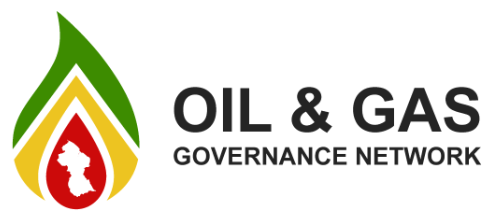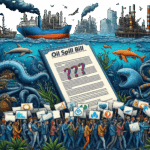Every Man, Woman and Child in Guyana Must Become Oil-Minded – Column 155
The National Assembly is scheduled to meet today, as the 12th Parliament moves to a close in preparation for historic elections. The Prime Minister will lead the second reading of the Oil Pollution Prevention, Preparedness, Response and Responsibility Bill tabled last week. At first glance, the unsuspecting reader and observer may believe that the law set out in the 56-page, 39-clause Bill, arranged over eleven parts from Preliminary to Miscellaneous, is progress and development. They would be dangerously mistaken.
Beneath this technical jargon and smooth veneer lies a troubling reality: this legislation may weaken the very protections it purports to strengthen. Perhaps most strikingly is the suspicion that one of the hidden objectives of the Bill is to neutralise the decision of Justice Sandil Kissoon in the successful action brought by Fred Collins and Godfrey Whyte vs. the EPA and (conveniently joined by) ExxonMobil Guyana. If that suspicion is true, it is infinitely worse than the Government seeking to reverse a ruling by the High Court for which an appeal is pending. Such practice is not unusual but is usually only done to plug loopholes and fix lacunae. In this case, it seems designed to relax the regulatory controls over which Exxon appears to call all the shots.
Legislative reversal of Kissoon
To recap, in the Collins and Whyte case v. EPA, Justice Kissoon found that ExxonMobil’s Guyana subsidiary, a major oil company, had operated for eleven months in violation of its permit by failing to provide unlimited liability insurance. Meanwhile, the EPA had “descended into a state of slumber” and acted as a “derelict, pliant, and submissive” regulator.
If the Government persists with this Bill, it is not just legislative malpractice but another egregious abandonment of the national interest, in which we moved from the President’s “Review and Renegotiate to supine capitulation. In close to five years, this Government has failed to close a single annual audit; it refuses to use its powers to set any conditions, such as ringfencing, in production licences. It has engaged in secret deals with Exxon concerning the Gas – to – Shore and, most incredibly, has not enforced the mandatory relinquishment clause in the Agreement.
Despite representing “one of the most critical environmental and economic bills ever presented to our Parliament,” this legislation is being fast-tracked without adequate scrutiny. The Bill’s technical provisions, multiple bodies, unconnected parts, divisions, and sections without clear interconnection, as well as vague drafting that special interests can exploit, make for an almost unworkable arrangement.
MBA – style creation
The legislation creates at least five major bodies: the Civil Defence Commission (as the “Competent National Authority”), its six-member Governing Board, a National Oil Spill Committee with over 20 agency representatives, ad hoc Oil Spill Incident Boards of Inquiry, and a National Emergency Operations Centre. Inescapably, 95% of all these positions are directly appointed by the Minister, with the remaining 5% being ex officio appointments of officials who were themselves politically appointed, creating a system where political loyalty takes precedence over technical expertise. This legislative masterpiece is worthy of a special case study at Harvard Business School under “Advanced Organisational Dysfunction: A Masterclass in Bureaucratic Architecture.”
This maze of institutions, all operating under vague mandates with unclear lines of authority, virtually guarantees bureaucratic paralysis when swift action is needed. Rather than streamlining response capability, the Bill spreads functions and responsibilities across multiple layers of bureaucracy, creating enough regulatory confusion to allow oil companies to operate with even greater abandon. At the same time, appointees can always point to some other body as being responsible for enforcement. When a spill occurs, who exactly is in charge? The Bill’s answer seems to be everyone – and no one. A disaster dressed up as comprehensive governance. Taxpayers Pay – Exxon creams
As the structure goes, so do the financial arrangements. Typically, in regulated sectors, it is the players who fund the regulators through a levy. Not with this Bill. The entire elaborate bureaucratic ecosystem – five major bodies, dozens of appointed officials, multiple committees, emergency centres, and boards of inquiry is funded entirely by Guyanese taxpayers through the Consolidated Fund. This allows the oil companies to operate in Guyanese waters, as the ultimate spillers and polluters of Guyanese shores – and beyond.
What makes this sellout particularly galling is how it exceeds even ExxonMobil’s original expectations. The oil giant has operated for years, knowing it needed unlimited liability coverage – that was the deal from the start. Justice Kissoon insisted on the enforcement of existing obligations.
Clause 22, in plain terms, removed that obligation and placed it on a motley group of ill-defined entities known as the responsible party. In contrast, Clause 21 can be read to render a parent company’s guarantee invalid. Clyde & Co told us that Exxon’s Brook Harris wrote the Cabinet Paper recommending the signing of the 2016 Agreement. I have serious doubts that Brook Harris could have done a better job on this one. Or maybe Brook Harris has a twin.
Christopher Ram











